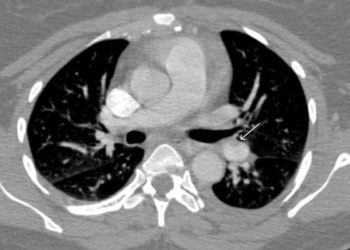High-dose prophylaxis for hemophilia increases costs with minimal benefit
Image: PD
1. High-dose prophylaxis for severe hemophilia increases total cost of care.
2. Compared to intermediate-doses, high-dose prophylaxis reduces bleeding and hemophilic arthropathy, but results in equal quality of life.
Evidence Rating Level: 2 (Good)
Study Rundown: Though relatively rare, patients with severe hemophilia are at risk for spontaneous and trauma-related bleeding leading to joint arthropathy, and thus present a significant challenge to clinicians. Prophylactic factor replacement therapy has been shown to help prevent these complications. However, this treatment is associated with high costs of care. Therefore, the goal of this observational study is to compare the long-term costs and clinical outcomes between intermediate-dose and high-dose prophylactic regimens for severe hemophiliacs.
Overall, the authors of this study found that annual total costs were significantly higher for high-dose prophylaxis. However, this more intense therapy was also associated with slightly, though significantly, reduced bleeding events and hemophilic arthropathy. There was no difference in quality of life between regimens. In conclusion, at the group level high-dose regimens appear to offer only incremental benefits at high cost. However, when considering the care of a single patient, clinicians must individualize prophylaxis to balance the risk of complications with the cost of care.
By recruiting patients from multiple centers in Sweden and the Netherlands, following them since the 1970s, and taking extensive measures to control variation between these two groups, the authors of this study strengthened the implications of its results significantly. Nevertheless, the observational nature of this study still allows for variability in age at the start of prophylaxis and in how health outcomes were measured. Furthermore, the high-dose population came from Sweden and the intermediate-dose from the Netherlands, allowing for potential variation in medical care besides prophylaxis dose.
Click to read the study in Blood
Relevant Reading: Changes in treatment strategies for severe haemophilia over the last 3 decades: effects on clotting factor consumption and arthropathy
In-Depth [Observational cohort study]: The authors of this study began by selecting a total of 128 patients with severe hemophilia (defined as FVIII/IX < 1 IU/dL) born between 1970 and 1994 and cared for at several centers throughout Sweden and the Netherlands. The standard of care in Sweden called for high-dose prophylaxis, 4000 IU/kg per year of clotting factor, while Dutch patients on average consumed 2100 IU/kg per year. The primary health outcome used was clinical joint status, calculated as the Haemophilia Joint Health Score (HJHS). Secondary outcomes were the annual number of joint bleeds, self-reported activities, health-related quality of life, and social participation in the last 5 years. Healthcare resource use and lost production in both cohorts were measured by Dutch prices in 2010. Direct medical costs (such as clotting factor costs) and indirect costs in lost productivity were then compared between groups.
In analysis, this study found that health outcomes were slightly, but significantly improved in the high-dose group. The intermediate-dose group had one additional joint bleed per year (p < 0.01), higher HJHS scores (9.0 vs 7.0 points of 144) and more limitations on daily activities (median Haemophilia Activities List score 93 vs 99 of 100). However, quality of life was similar across both cohorts (p = 0.93). The predicted annual total costs were 66% higher for high-dose prophylaxis (p < 0.01). Medical costs came almost entirely from clotting factor (97.1% of costs for intermediate-dose and 99.6% for high-dose).
By Monica Parks and Andrew Bishara
More from this author: Ambrisentan found ineffective against idiopathic pulmonary fibrosis
© 2013 2minutemedicine.com. All rights reserved. No works may be reproduced without expressed written consent from 2minutemedicine.com. Disclaimer: We present factual information directly from peer reviewed medical journals. No post should be construed as medical advice and is not intended as such by the authors, editors, staff or by 2minutemedicine.com. PLEASE SEE A HEALTHCARE PROVIDER IN YOUR AREA IF YOU SEEK MEDICAL ADVICE OF ANY SORT.






